Tsukuda 1/72 A-1H Skyraider review
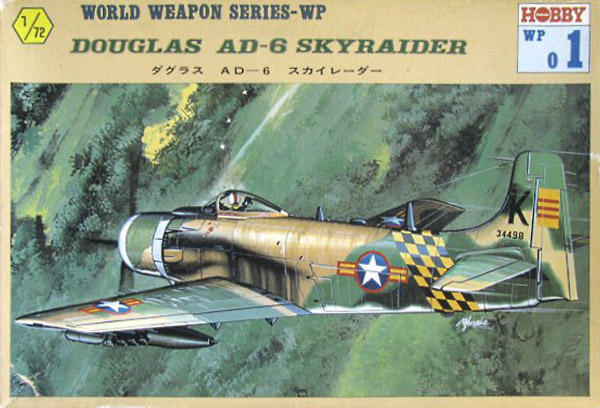
| While building the Airfix 1/72 A-1H/J Skyraider in the late eighties / early nineties, I heard about a Tsukuda Skyraider kit, that should have much better detail. I searched high and low for it, but in pre-internet days, I could not find one. When the Hasegawa kit came out in 1996, my search stopped, but I never forgot about it. Imagine my surprise in 2018 when Cees den Hartog, a club member from my IPMS-NL chapter, was giving away surplus half-built kits, including a Tsukuda Skyraider. Twenty-two years had passed since the search stopped, but I was still very happy to finally obtain one. I decided to write a review as if it was a new model.
|
Kit versions
Tsukuda issued two versions of the model, that were issued 1983 as far as I know. Both boxes have beautiful box art. The VNAF version box art, with a hard-banked Spad over a tilted SEA landscape, is especially nice.
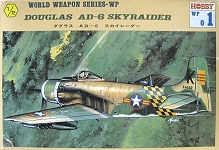
| 
|
| Tsukuda Hobby WP01
| Tsukuda Hobby WP02
|
Hobbycraft reissued the Tsukuda kit in 1993 in three versions. The box art is quite horrible, and suggest the contents are of low-quality.
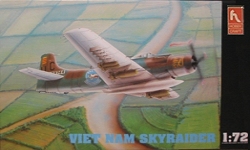
| 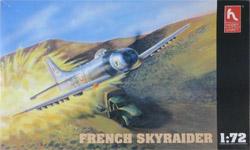
| 
|
| Hobbycraft 1367
| Hobbycraft 1368
| Hobbycraft 1369
|
My Tsukuda kit
| Here's the box that I got from fellow club member Cees den Hartog. It had parts of a blue PVC folder stuck to it, signs of years and years of storage. The decal sheet was undamaged.
| 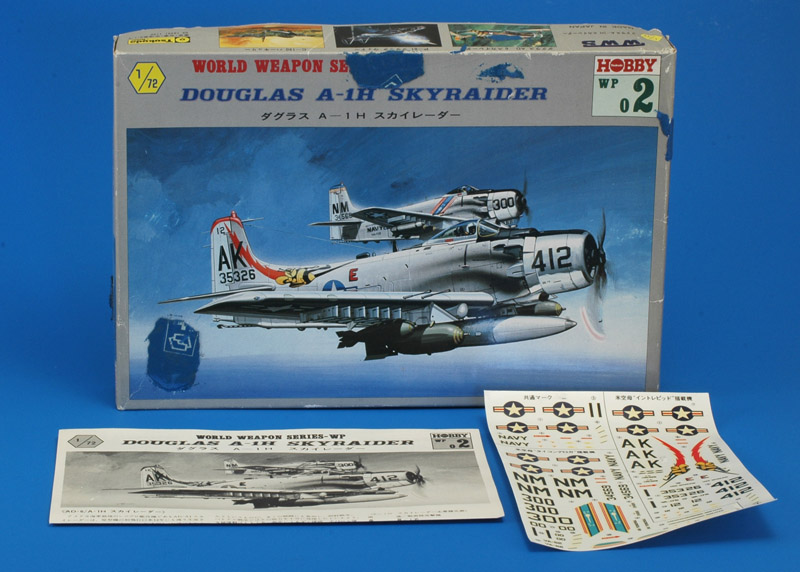
|

| The kit was partially built, and I dry-assembled the various parts for this photo. A nice surprise was the propeller, that had blades with the correct chord, one of the few errors in the Hasegawa kit.
|
The kit has engraved panel lines, pretty good detail and a nice decal sheet. One subtle shape error is that the cowling is too cilindrical, it should have more taper towards the front.
On an Airfix-Hasegawa Skyraider scale it's roughly at 80%. Not bad at all for a 1983-vintage kit!
| 
|
In-box kit review
Late 2021 I also obtained one of the Hobbycraft reissues of this kit, the 'French Skyraider' with catalog number HC1368. I photographed all sprues, and they are shown at the same scale, except the canopy.
The panel lines are fine and shallow, but the panel lines on the Hasegawa kit are finer. The panel lines are mostly consistent, but a few lines on the fuselage sides 'sidestep' a bit, like one experiences when engraving a model with raised panel lines.
The fuselage halves match the Hasegawa fuselage halves closely, except the fin height which is 1 mm lower. Compared to the Hasegawa kit, the open speed brakes are a big difference, although open speedbrakes are a very rare sight on the Skyraider.
Tsukuda forgot the armor plate on the lower front fuselage. I measured that 0.25 mm thickness plastic card is required to add the missing armor. The same goes for the raised sheet metal in front of the speed brakes.
The four small shields that block the exhaust flames from the pilot are absent.
| 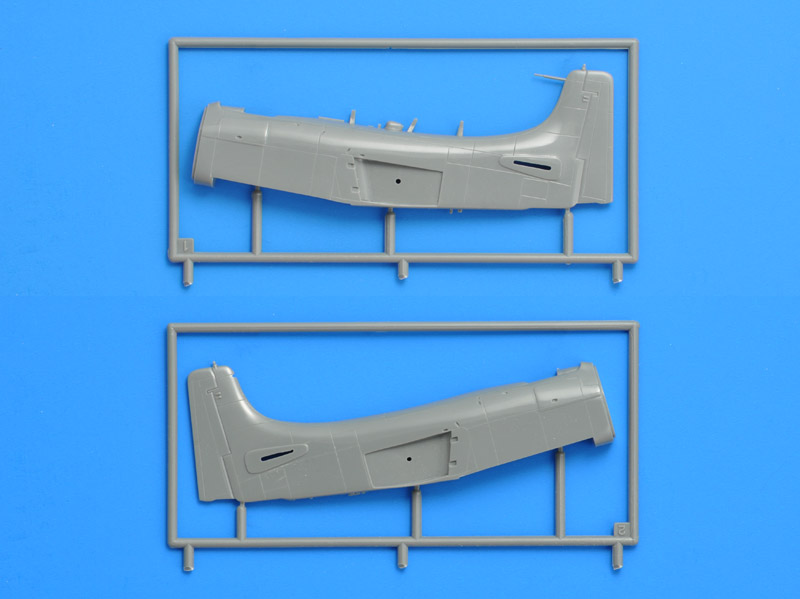
|
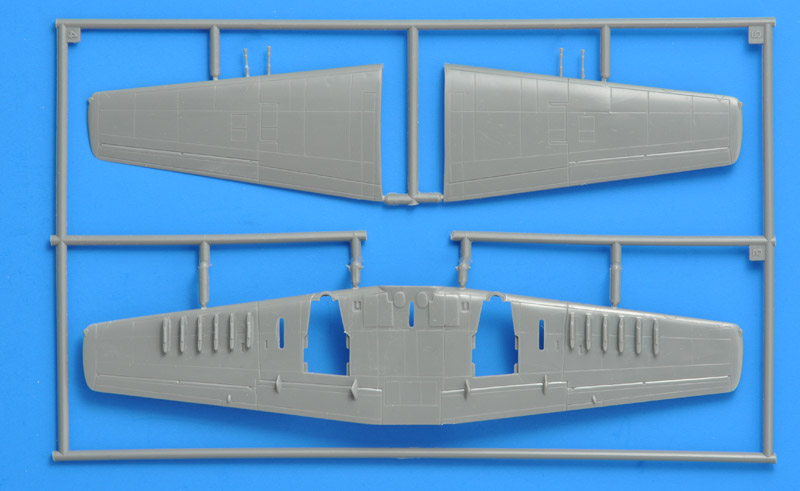
| The wings look good. The main landing gear openings lack walls and the stringers on the top side. You can look inside the wing structure. The trailing edge of the assembled wing is thick, approximately 1.2 mm (Hasegawa is ~0.7 mm).
The pylons are molded integrally, but their spacing is not 100% correct. I measured 3.3 mm space between in the inner four, and 3.7 mm space between the outer three.
|
On this sprue the propeller stands out: its shape is better than that of the Hasegawa kit, that has blades that are too narrow. The prop 'axle' fits loosely in the engine/cowling, so it can assume any position - this needs improvement. On the horizontal tails, the elevators taper strongly in thickness, and that looks strange. A good way to hide this is to deflect the elevators.
The solid cylinders top-left are SUU-11 7.62mm minigun pods. The real ones are 12" diameter = 305 mm = 4.2 mm in 1/72 scale, but the kit part diameter is 3.3 mm. The length is 85" = 2159 mm = 30.0 mm, but the kit part is 23.4 mm. This makes the gun pods 1/92 scale. Just below the gun pods are two SUU-14 six-tube submunitions dispensers. I don't know the real dimensions, but they are almost same size as Hasegawa parts.
| 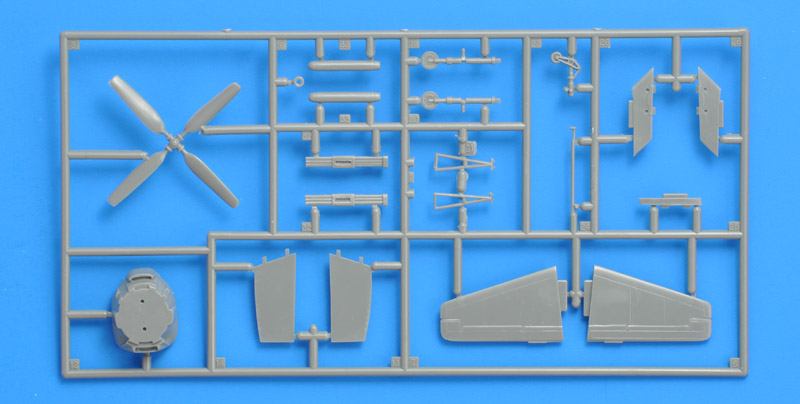
|
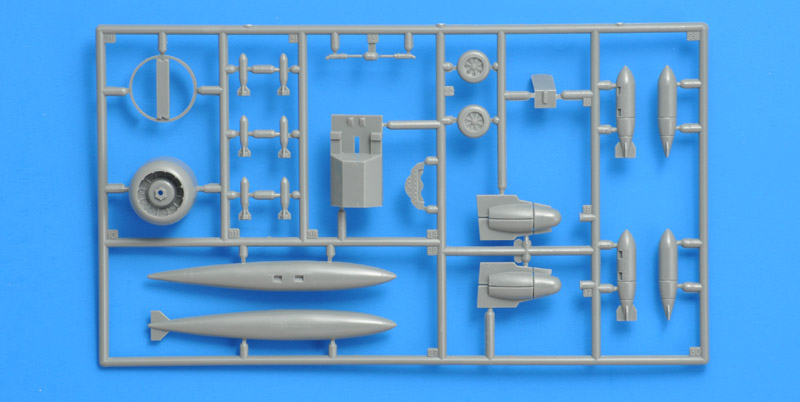
| The cowling has an integral engine representation that is not very realistic. The interior of the cowling is ribbed. The real cowling has raised areas between the internal cooling flaps (shutters), but the model represents this too strong. Between the cowling and the front fuselage, the part in the upper left corner of the runners is mounted. It represents the six cowl flaps in the closed position; not completely satisfactorily.
The wheels are a bit strange: there is no line between the tire and wheel. The spoked wheels are US Navy style. The cockpit floor with 'fuel tank' at the rear reminds me of the Airfix cockpit. There is no pilot figure.
The two large bombs on the right I cannot identify. The diameter is 6.3 mm or 17.9" in real life. That's too large for M64 (14.2") but too small for M65 (18.8"), and similarly too large for M117 (16.1") but too small for M118 (24.1"). The six small bombs look somewhat like M30s, but the diameter of 2.3 mm = 6.5" does not match the listed diameter of 8.2".
The main wheel doors need to be cut in three parts for a model with the landing gear down. The centerline tank looks like a standard Navy 300 gallon type, the Hasegawa kit has the same. But the tank's diameter is too large, see dimensional checks below.
|
| The two-piece canopy is OK for its time, but we're now used to much better ones. I think the canopy part lacks a bit of the bulbousness of the real thing. I would replace it with a Squadron or Rob Taurus vacformed example.
| 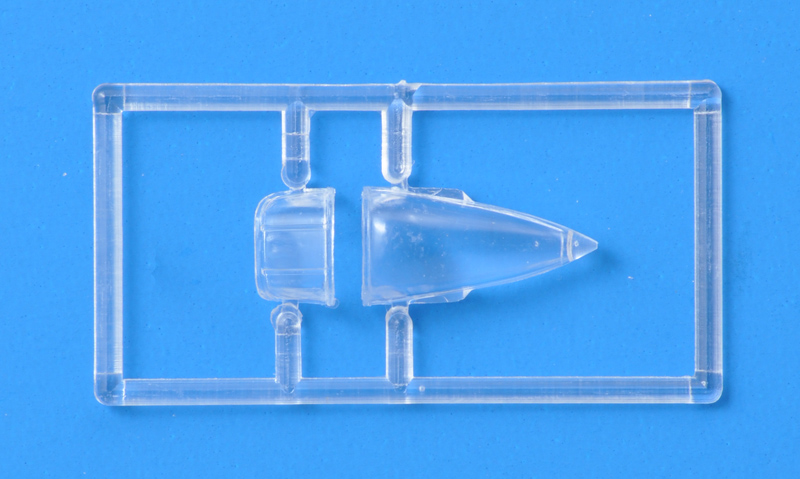
|
Dimensions
Next, I did a dimensional check of the model. For comparison I also measured the Hasegawa model.
|
| Douglas data
| SI units
| Airfix
| Tsukuda
| Hasegawa
| Comments
|
|
| source
| inch
| mm (1/1)
| mm (1/72)
| mm
| diff.
| mm
| diff.
| mm
| diff.
|
|
| Fuselage length
|
| 38.9'
| 11857
| 164.7
|
|
| 164
| -0.4%
| 164.5
| -0.1%
| along a/c waterline zero, including propeller, excluding tail hook
|
| Fuselage width (max)
|
|
|
|
|
|
| 21.5
|
| 21.6
|
| excluding armor plates
|
| Wing span
|
| 50.0'
| 15249
| 211.8
|
|
| 211.5
| -0.1%
| 210
| -0.8%
|
|
| Tail span
|
|
|
|
|
|
| 86.5
|
| 85.2
|
|
|
| Propeller diameter
|
|
|
|
|
|
| 57.2 - 57.5
|
| 56.7
|
|
|
| Cowling diameter
|
|
|
|
| 20.4 min -
21.2 max
|
| 21.1 min -
21.6 max
|
| 20.3 min -
21.6 max
|
| all kit cowlings taper rear to front. The Tsukuda cowling possibly tapers too little, it might be too cilindrical
|
| Fuel tank diameter
|
| 26.5"
| 673
| 9.3
|
|
| 10.1
| +8.6%
| 9.4
| +1.1%
| Douglas Low-drag External Fuel Tanks
|
| Fuel tank length
|
| 225.81"
| 5736
| 79.7
|
|
| 80.8
| +1.4%
| 81.0
| +1.6%
| Douglas Low-drag External Fuel Tanks
|
Conclusion
I think the Tsukuda kit is a surprisingly good model for its time. Overall, I would judge it three quarters of the quality of the Hasegawa model. Therefore the latter is still the easiest route to an excellent Skyraider.
the dimensions and shapes are correct as far as I can see
the model has quite a few weapons and a tank, but are much less accurate, and I recommend replacing them all, except the SUU-14s.
errors that can be fixed quite easily:
the missing exhaust flame shields are easily scratchbuilt
the missing armor plate on the lower cockpit side can be made from plastic card
the cockpit can be upgraded with KMC set 72-7016 'A-1H/J Skyraider update set'
the main wheel wells can be scratchbuilt, or replaced by Aires set 7097 'Skyraider wheel bay'
the tail wheel well can be scratchbuilt, or replaced by Quickboost set 72-186 'A-1D Skyraider rear wheel well'
the cowl flaps could be replaced by Quickboost set 72-254 'A-1 Skyraider exhaust' that includes the exhaust pipes
errors that are more difficult to fix:
if you want to correct the wing pylon spacing, you're in for quite a bit of work
changing the cowling taper could be difficult without a lathe
Other reviews
FineScale Modeler, May-June 1984 issue. It reads as follows:
Kit: No. 02, Douglas A-1 H Skyraider
Scale: 1/72
Manufacturer: Tsukuda Hobby, Japan
Price: $4.00.
The workhorse of the U. S. Navy from the late 1940s, the "Spad" saw action in both Korea and Vietnam. This is the first new kit of the A-1 in this scale in over 10 years and the first aircraft kit (kit 01 is the same kit with different markings) from Tsukuda. The 56-piece kit is molded in gray and clear styrene and features two-position dive brakes on the fuselage sides, but curiously, no dive brake on the bottom of the fuselage. The panel lines are engraved and are a little heavy for the scale. The instructions are in Japanese but the diagrams are clear and easy to understand. The decal sheet offers markings for aircraft from VA-176 and VA-52 and is well printed. The model represents an A-1H (AD-6) or A-1J (AD-7) which had applique armor plate on the sides and bottom of the fuselage to increase protection for the pilot. It could be converted to earlier single-seat versions by sanding these plates off. Underwing stores include a fuel tank, bombs, 6-tube rocket launchers, and two miniguns. I had no major problems building the kit. The fit was good with a minimum of putty required in the wing-fuselage joint. The two-piece cowling needed a little extra attention when I attached it to the fuselage; I had to press it on and rely on super glue to keep it in place. There are some small ridges inside the cowling that don't appear on any photo I've seen of the Skyraider and because of their location they are difficult to remove. The canopy is thick and heavily framed but fits well to the fuselage. The horizontal stabilizers are also too thick. All in all I was pleased with the model. It was simple to build, taking only 10 hours in-cluding painting. The finished model scales well with the information in Squadron/Signal's Skyraider in Action and the attractive markings make it a real eye-catcher. I hope to see more from Tsukuda. Paul Boyer
Hobbycraft 1/72 A-1 'French Skyraider' review by Scott Van Aken on Modeling Madness
Build reports
I found only a few built examples of this model:
Return to models page













